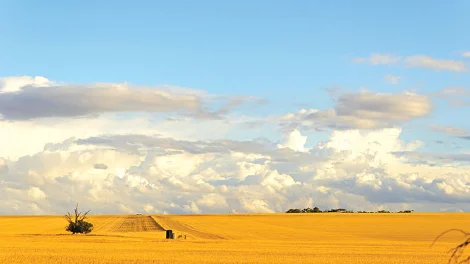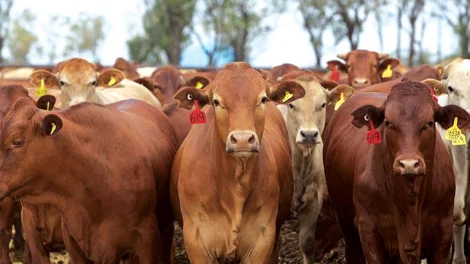

Experiencing a second year of drought in New South Wales (NSW) and Queensland (QLD), record amounts of wheat, barley and other alternative products continue to be moved from Western Australia (WA) and South Australia (SA) to the east coast.
Grain is making the journey across the country to fill the unprecedented levels of interstate grain needed to keep Australia’s livestock, milling and malting industries afloat.
Glencore Agriculture Domestic Grain Merchant, David Wood, believes Australia has never imported via bulk vessels at this scale before.
“In the previous decade, subject to seasonal conditions, we may have had one or two smaller niche commodities come around for malting or milling grade deficits,” David said.
“In regular years the east coast produces a surplus of wheat and barley that is marketed offshore through any of the grain ports located along the east coast.
“We’ve never before seen the volume of grain being moved via bulk vessels from WA and SA to fulfil the east coast grain deficit.”
Declining wheat and barley production
In December 2018, the Australian Bureau of Agricultural and Resource Economics and Sciences (ABARES) forecast that wheat production would decrease year on year by 20 per cent to around 17 million metric tonnes (mmt), and barley would fall by 18 per cent to around 7.3mmt in 2018/19, from the year before.
This means the Australian wheat crop is the lowest since the drought affected 2007/08 crop, and production in NSW and QLD is forecast to be the lowest since 1994/95.
As a result, the eastern seaboard has become reliant on WA according to David, which experienced a bumper crop thanks to more favourable seasonal conditions.
Feedlot frenzy
Wheat and barley are being imported to the east coast to satisfy the ever increasing east coast feed demand as well as wheat for flour millers and barley needed for malting purposes.
The Australian Lot Feeders Association’s (ALFA) November 2018 survey figures suggest the Australian feedlot industry is showing no signs of slowing, with approximately 1.1 million cattle being fed in feedlots – a record high. However, if an east coast rainfall break is recorded in the season, the figure may drop to around one million.
ALFA also reported that cattle feed for the July to September 2018 quarter increased by 10 per cent from the same quarter in 2017. QLD recorded the greatest percentage increase, followed closely by NSW and Victoria (VIC).
With demand for grain exceeding supply, commodity prices have skyrocketed, particularly on the east coast.
“On the east coast, prices are at decile ten, reaching highs of $455 and commonly trading a range between $435 and $455 which is well above the 10 year average,” David says.
Domestic consumption
The high prices are not just hitting the feed industry. Some of Australia’s largest food franchises are expecting increases in the cost of wheat and barley to be passed onto customers in 2019 as millers and maltsters across the country respond to a poor harvest.
Australia currently consumes approximately 15mmt of grain domestically per year. 12mmt of domestic grain consumption occurs on the east coast, accounting for around 80 per cent of Australia’s human and livestock population, with the remaining 3mmt of domestic consumption split across SA and WA.
With the east coast winter crop production in 2018/19 at around 8mmt, WA and SA have to make up the deficit.
While high demand and domestic grain prices mean less of the 2018/19 production will be available to export, there is still an exportable surplus from WA and SA.
Although usual international markets will look elsewhere to meet demand shortfalls, these markets value the quality of Australian grain, which is expected to rebound when Australia has greater export volumes available.
Interstate imports set to continue
David expects wheat and barley will continue to be shipped from the west to the east coast at an elevated rate, with a total of approximately 4mmt crossing the country in 2019 via bulk vessel from WA, and road, rail and truck movements from SA.
“Going forward, coastal shipments will continue to the east coast through 2019 when the grain is priced accordingly, as it’s a well trodden track and relatively easy to do.”
David says it’s too early in the season to say what the 2019/20 crop outlook will be, but growers have their fingers crossed for timely rain.
“Australia is lucky in the fact that we can meet our own stock requirements between the states if need be, and still have surplus for international markets.”